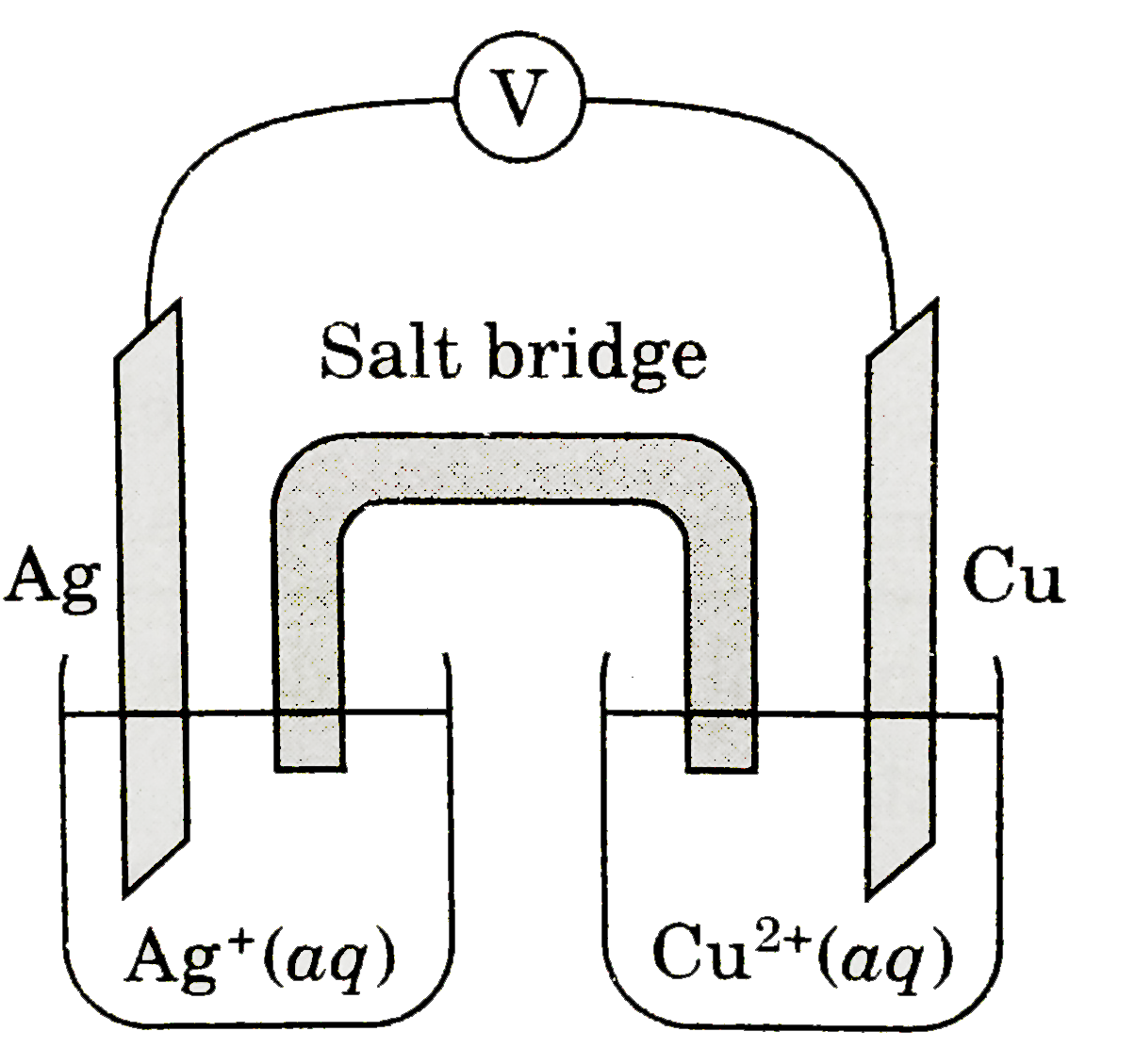Which change will cause the largest increase in the voltage of a cell based on the reaction above?
Doubling the from 1M to 2M
Doubling the amount of M(s)
Doubling the volume of the 1M solution
Reducing the from 1 M to 0.5M
The correct Answer is:A
Step by step video, text & image solution for 2Ag^(+)(aq)+M(s)rarrM^(2+)(aq)+2Ag,E^(@)=0.940V Which change will cause the largest increase in the voltage of a cell based on the reaction above? by Chemistry experts to help you in doubts & scoring excellent marks in Class 12 exams.
Updated on:21/07/2023Topper's Solved these Questions
- ELECTROCHEMISTYBook:GRB PUBLICATIONChapter:ELECTROCHEMISTYExercise:Match the column type
Explore 16 Videos
- ELECTROCHEMISTYBook:GRB PUBLICATIONChapter:ELECTROCHEMISTYExercise:Subjective type
Explore 39 Videos
- ELECTROCHEMISTYBook:GRB PUBLICATIONChapter:ELECTROCHEMISTYExercise:Multiple objective type
Explore 33 Videos
- D-BLOCK ELEMENTSBook:GRB PUBLICATIONChapter:D-BLOCK ELEMENTSExercise:Subjective Type
Explore 18 Videos
- ENVIRONMENTAL CHEMISTRY Book:GRB PUBLICATIONChapter:ENVIRONMENTAL CHEMISTRY Exercise:Straight objective type
Explore 40 Videos
Similar Questions
The Nernst equation: Consider the following galvanic cell
Pb(s)∣∣Pb2+(aq.)∣∣∣∣Ag2+(aq.)∣∣Ag(s)
(a) What is the quantitative change in the cell voltage on increas-ing the ion concentrations in the anode compartment by a factor of 10?
(b) What is the quantitative change in the cell voltage on increas-ing the ion concentration in the cathode compartment by a factor of 10
Strategy: The conventional notation of the cell tells us that lead is the anode while silve is the cathode. Therfore, the cell reaction is
Pb(s)+2Ag+(aq.)→Pb2+(aq.)+2Ag(s)
The cell potantial (at 25∘C) is given by the Nernst equation, where n=2 and Q=CPb2+/CAg+:
Ecell=E∘cell−0.0592VnlogQ
E∘cell−0.0592VnlogQCPb2+C2Ag+
View SolutionAg+(aq)+e−→Ag(s)E∘=0.80V
Cu2+(aq)+2e−→Cu(s)E∘=0.34V

Which increases immediately if the surface area of the silver electrode is increased?
View Solution
Knowledge Check
For the cell
Zn(s)+2H+(aq)rightarowZn2+(aq)+H2(g), E∘=0.76V
Which change will increase the voltage of the cell?Aincreasing the size of the Zn electrodeBincreasing the [Zn2+]CIncreasing the [H+]Dincreasing the pressure of the H2(g)A voltaic cell is constructed with the overall reaction :
Sn2+(aq)+2Ag+(aq)→Sn4+(aq)+2Ag(s).
Which change will increase the voltage of the cell?Aincreasing [Sn2+]BIncreasing [Sn4+]CDecreasing [Ag+]DReducing the size of the Ag electrode2Ag+(aq)+M(s)→M2+(aq)+2Ag,E∘=0.940V
What is the value of E∘ for the half reaction, M2+(aq)+2e−→M(s)?
E∘/VAg+(aq)+e−→Ag(s)0.99A0.658VB0.141VC−0.141VD−0.658V
2Ag+(aq)+Cu(s)→Cu2+(aq)+2Ag(s)
The standard potential for this reaction is 0.46 V. Which change will increase the potential the most?
View SolutionConsider a volatic cell based on these half -cell :
Ag+(aq.)+e−→Ag(s),E∘=+0.80V
Cd2+(aq)+2e−→Cd(s),E∘=−0.40V
Identify the anode and give the voltage of this cell under standard conditions
View SolutionConsider a voltaic cell based on these half - cell reactions
Ag+(aq)+e−→Ag(s):E∘=+0.80V
Cd+2(aq)+2e−→Cd(s),E∘=−0.40V
identify the anode and give the voltage of this cell under standard condition.
View SolutionWhich will increase the voltage of the cell Sn(s)+2Ag+(aq)→Sn2+(aq)+2Ag(s)
View SolutionAg+(aq)+e−→Ag(s)E∘=0.80V
Cu2+(aq)+2e−→Cu(s)E∘=0.34V

Which expression gives the voltage for this cell if [Cu2+]=1.00M and [Ag+]=0.010M?
View Solution